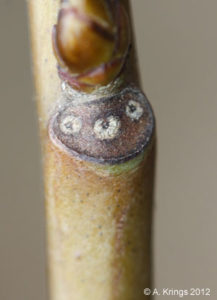Tree Identification in Winter
go.ncsu.edu/readext?643266
en Español / em Português
El inglés es el idioma de control de esta página. En la medida en que haya algún conflicto entre la traducción al inglés y la traducción, el inglés prevalece.
Al hacer clic en el enlace de traducción se activa un servicio de traducción gratuito para convertir la página al español. Al igual que con cualquier traducción por Internet, la conversión no es sensible al contexto y puede que no traduzca el texto en su significado original. NC State Extension no garantiza la exactitud del texto traducido. Por favor, tenga en cuenta que algunas aplicaciones y/o servicios pueden no funcionar como se espera cuando se traducen.
Português
Inglês é o idioma de controle desta página. Na medida que haja algum conflito entre o texto original em Inglês e a tradução, o Inglês prevalece.
Ao clicar no link de tradução, um serviço gratuito de tradução será ativado para converter a página para o Português. Como em qualquer tradução pela internet, a conversão não é sensivel ao contexto e pode não ocorrer a tradução para o significado orginal. O serviço de Extensão da Carolina do Norte (NC State Extension) não garante a exatidão do texto traduzido. Por favor, observe que algumas funções ou serviços podem não funcionar como esperado após a tradução.
English
English is the controlling language of this page. To the extent there is any conflict between the English text and the translation, English controls.
Clicking on the translation link activates a free translation service to convert the page to Spanish. As with any Internet translation, the conversion is not context-sensitive and may not translate the text to its original meaning. NC State Extension does not guarantee the accuracy of the translated text. Please note that some applications and/or services may not function as expected when translated.
Collapse ▲Extension Gardener Workshop
Correct identification is a critical first step in making management decisions for any plant in the landscape or garden. Identification of tree species is of particular interest for landowners managing woodlands for wildlife or timber, for farmers with livestock browsing near potentially toxic species, and for naturalists seeking to enhance their familiarity with native trees.
Many may be deterred by the esoteric terminology and specialized features used for tree identification. Fortunately, most woody plants can be readily distinguished by twig, bud, and bark characteristics, making winter a great time of year to learn the identity of trees and understory shrubs on your property.
Join Matt Jones (Extension Horticulture Agent) and the Master Gardener℠ volunteers of Chatham County for a lecture and hands-on workshop on winter botany for landowners, landscapers, farmers, park managers, naturalists and anyone curious about trees. Participants will learn about the types of tree characters used for identification, as well as how to use free, online tools (such as dichotomous keys) from NC State University. Gain experience through both guided and individual practice identifying provided native tree samples.
Two identical sessions of this workshop are available to accommodate your schedule:
- Thursday, Jan. 12, 2023, 9:30 a.m.– 12:00 p.m. REGISTER
- Thursday, Jan. 12, 2023, 5:30 p.m.– 8:00 p.m. REGISTER
The workshop costs $15 per person, which includes a 10x hand lens and light refreshments for all participants. Registration and fee payment is required by Jan.11th, 2023. Select a date and click on the REGISTER link above. Additional classes may be offered if there is sufficient demand. If spaces are full, add your name to the waitlist on the registration page.
Both workshops will be held at the Chatham County Agriculture and Conference Center (1192 US 64 W Business in Pittsboro).
QUESTIONS? Contact N.C. Cooperative Extension, Chatham County Center by calling 919-542-8243 or email matt_jones@ncsu.edu
NC State University and N.C. A&T State University commit themselves to positive action to secure equal opportunity and prohibit discrimination and harassment regardless of age, color, disability, family and marital status, genetic information, national origin, political beliefs, race, religion, sexual identity (including pregnancy), and veteran status. NC State, N.C. A&T, U.S. Department of Agriculture, and local governments cooperating. Persons with disabilities and persons with limited English proficiency may request accommodations to participate by contacting Ginger Cunningham, County Extension Director, at 919.542.8202, ginger_cunningham@ncsu.edu, or in person at the County Extension Office at least 30 days prior to the event.





